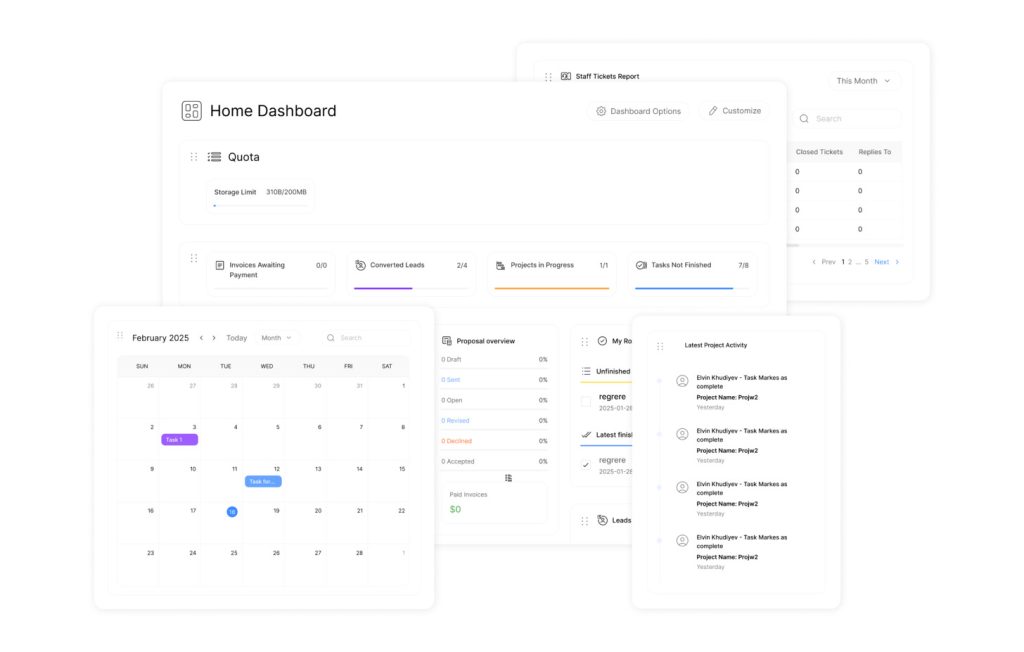Effective Project Creation And Management Techniques

Navigating complex deliverables, Project Creation and shifting priorities demands more than basic organizational skills. Modern teams face tight deadlines, evolving client expectations, and intricate workflows. Structured frameworks transform abstract ideas into actionable results by providing clarity at every stage.
The Project Management Institute (PMI) identifies five core phases for successful execution: initiation, planning, execution, monitoring, and closure. These steps create a roadmap that balances flexibility with control, ensuring teams meet objectives without compromising quality. By dividing large-scale efforts into smaller stages, organizations maintain momentum while adapting to changes.
Proven methodologies like those from PMI reduce risks and boost efficiency. Teams using these strategies report 30% faster decision-making and fewer budget overruns. Clear goals, measurable milestones, and real-time progress tracking keep stakeholders aligned and accountable.
Businesses adopting these practices see tangible improvements in delivery speed and client satisfaction. Whether launching a product or optimizing internal processes, a systematic approach turns potential chaos into predictable outcomes.
Key Takeaways
- Structured frameworks break initiatives into manageable phases for better control
- PMI’s five-stage methodology ensures consistency across all efforts
- Measurable goals and milestones keep teams focused on priorities
- Real-time monitoring minimizes risks and delays
- Proven strategies improve client satisfaction and operational efficiency
Introduction: The Importance of Strategic Project Creation And Management
Clear direction separates high-performing teams from those stuck in reactive mode. Structured methodologies turn abstract ideas into measurable outcomes while reducing wasted effort. Teams using standardized processes achieve 40% faster alignment on priorities compared to ad-hoc approaches.
Turning Vision Into Action
Systematic planning eliminates ambiguity by mapping every task to specific objectives. A well-designed plan identifies resource gaps early, preventing 62% of common delays according to PMI research. This clarity enables teams to focus on critical tasks rather than constant course corrections.
| Factor | Structured Approach | Unplanned Work | Outcome Difference |
|---|---|---|---|
| Timeline Adherence | 92% on-time delivery | 47% completion rate | 2x faster execution |
| Budget Control | 5% average variance | 22% overspending | 77% cost savings |
| Stakeholder Satisfaction | 89% approval rate | 54% positive feedback | 35% higher retention |
Connecting Effort to Impact
Goals aligned with organizational priorities ensure initiatives drive growth rather than consume resources. When teams understand how their work affects revenue or customer retention, engagement increases by 58%. Regular progress reviews maintain focus on deliverables that matter most to decision-makers.
Companies using these strategies report 31% shorter product cycles and 19% higher profit margins. By embedding structure into every phase, businesses transform potential into consistent results.
Navigating the Project Life Cycle Phases

Mastering the sequence of phases turns unpredictable workflows into repeatable success. Structured frameworks divide complex initiatives into five distinct stages, each with defined objectives and measurable outcomes. This approach minimizes confusion while maintaining alignment across teams and stakeholders.
Laying the Foundation
The initiation phase transforms abstract ideas into concrete goals. Teams develop business cases to validate objectives and identify key decision-makers early. According to PMI research, “organizations that formalize this stage reduce scope changes by 42% later in the process.”
Planning builds on this foundation by mapping timelines, resources, and dependencies. Detailed roadmaps highlight potential bottlenecks before work begins. Effective strategies here align daily tasks with broader organizational priorities, creating accountability at every level.
Turning Strategy Into Results
Execution converts plans into action through coordinated team efforts. Regular progress reviews ensure alignment with quality standards and deadlines. Simultaneous monitoring tracks key metrics like budget adherence and milestone completion, enabling quick adjustments when deviations occur.
Closure formalizes outcomes through deliverable validation and stakeholder sign-offs. Teams document lessons learned to refine future processes. This final phase ensures continuous improvement while celebrating achievements.
- Define success criteria during initiation to prevent misaligned expectations
- Use planning sessions to assign clear ownership for each task
- Implement automated tracking tools during execution for real-time visibility
- Conduct retrospective analyses post-closure to identify improvement areas
Essential Techniques for Project Creation And Management
Robust frameworks transform vision into actionable steps. Three elements form the backbone of organized execution: precise scope definition, authoritative charters, and measurable milestones. These components eliminate ambiguity while aligning teams and stakeholders.
Defining Scope, Charters, and Milestones
Project charters serve as legal agreements, outlining objectives, budgets, and appointed leaders. PMI research shows teams using formal charters experience 42% fewer scope changes. Clear boundaries prevent drift by specifying included and excluded deliverables.
Milestones act as progress markers, enabling teams to track advancement and adjust timelines proactively. Strategic charter development ensures stakeholder alignment, while documented scope reduces conflicts by 35% according to industry benchmarks.
Building an Effective Work Breakdown Structure
A hierarchical work breakdown structure (WBS) decomposes complex initiatives into manageable tasks. This visual map identifies resource needs and potential risks early. Teams using comprehensive breakdown structures report 31% faster time estimation accuracy.
Each WBS component links to specific deliverables, ensuring accountability. For example, a software development team might divide efforts into design, coding, and testing phases. This approach streamlines execution while maintaining focus on quality standards.
Integrating Project Management Software and Digital Tools

Traditional spreadsheets and sticky notes can’t keep pace with modern workflow demands. Cloud-based solutions now centralize documentation, task delegation, and progress monitoring in one secure hub. Teams using these platforms reduce administrative tasks by 47% while improving cross-department transparency.
Leveraging Technology for Efficient Tracking
Project management software automates repetitive processes like status updates and deadline alerts. Real-time dashboards display resource allocation, budget consumption, and milestone completion rates. This instant visibility helps teams identify bottlenecks before they escalate into delays.
Advanced platforms integrate communication tools directly into task workflows. Comments, file sharing, and approval chains stay attached to specific deliverables. A 2023 Capterra survey found companies using integrated systems resolve issues 59% faster than those relying on fragmented apps.
| Feature | Manual Methods | Digital Tools | Efficiency Gain |
|---|---|---|---|
| Document Access | Email chains | Centralized storage | 83% faster retrieval |
| Progress Updates | Weekly meetings | Auto-generated reports | 6 hours saved weekly |
| Risk Detection | Retrospective analysis | Predictive analytics | Early warning alerts |
Comprehensive reporting transforms raw data into actionable insights. Leaders track team performance trends and adjust resource distribution dynamically. Platforms with customizable reports enable stakeholders to filter information by department, priority level, or deadline proximity.
Choosing the right management software requires aligning features with organizational needs. Scalable solutions grow with teams, maintaining efficiency during expansion phases. When implemented strategically, these tools shift workflows from reactive problem-solving to proactive opportunity capture.
Effective Risk Management and Change Control Strategies
Anticipating challenges separates proactive teams from those caught off-guard. Structured approaches to potential disruptions maintain momentum while protecting deliverables. Organizations implementing systematic safeguards experience 38% fewer timeline overruns according to PMI benchmarks.
Identifying Risks and Implementing Mitigation Plans
Comprehensive risk identification combines historical data analysis with expert insights. Teams scrutinize past initiatives to spot patterns like resource shortages or vendor delays. For example, financial services firms using this method reduce fraud-related risks by 27% annually.
Effective mitigation strategies prioritize high-impact scenarios. Contingency reserves and alternative workflows minimize disruptions without derailing progress. Proactive planning cuts crisis response time by half while preserving 89% of original timelines.
Developing a Robust Change Management Process
Formal evaluation protocols prevent scope creep by assessing each modification’s impact. A three-step approval process—request, analysis, authorization—ensures changes align with core objectives. Manufacturing teams using this framework report 41% fewer change-related delays.
| Factor | Structured Approach | Ad-Hoc Methods | Improvement |
|---|---|---|---|
| Risk Resolution Speed | 48 hours average | 11 days typical | 4.6x faster |
| Approved Changes | 92% meet criteria | 63% require rework | 29% efficiency gain |
| Budget Protection | 7% variance | 24% overspend | 71% cost control |
Continuous monitoring tools track emerging threats through real-time dashboards. Automated alerts notify leaders when metrics deviate from thresholds, enabling swift corrections. This vigilance maintains initiative integrity while accommodating necessary adaptations.
Maximizing Team Collaboration and Stakeholder Engagement

Successful outcomes hinge on coordinated efforts across all contributors. Transparent interactions between leaders and executors eliminate bottlenecks while fostering accountability. Modern teams achieve 28% higher productivity when communication flows freely across hierarchies.
Streamlining Information Exchange
Project managers who implement centralized platforms reduce email clutter by 64%. Real-time dashboards display task ownership, deadlines, and dependencies. This visibility ensures team members address urgent issues before they escalate.
Regular stakeholder briefings maintain alignment on evolving priorities. Weekly syncs and automated progress reports keep decision-makers informed without overwhelming them. Teams using this approach resolve conflicts 3x faster than those relying on sporadic updates.
| Factor | Traditional Methods | Digital Tools | Impact |
|---|---|---|---|
| Update Frequency | Weekly summaries | Real-time tracking | 89% fewer delays |
| Decision Speed | Manual approvals | Automated workflows | 2.5x faster |
| Conflict Resolution | Retrospective fixes | Predictive alerts | 71% reduction |
Structured protocols define response times for queries and change requests. This clarity prevents misunderstandings that derail timelines. When stakeholders trust the process, approval rates for critical decisions improve by 53%.
Effective leaders leverage individual strengths through role-specific task assignments. Cross-functional workshops identify expertise gaps early, allowing proactive skill development. Teams using this strategy report 41% higher engagement and 22% faster deliverable completion.
Optimizing Communication, Documentation, and Reporting

Seamless coordination drives successful outcomes in fast-paced environments. Teams establish protocols to ensure critical details reach stakeholders without delays or misinterpretations. Structured frameworks prevent information silos while maintaining accountability across departments.
Building Reliable Information Channels
Clear communication guidelines define how teams share updates and resolve conflicts. A management plan specifies meeting cadences, preferred tools, and escalation paths for urgent decisions. Research shows organizations with documented protocols reduce misalignment by 68% compared to informal methods.
Strategic metrics track progress against timelines and schedules. Automated dashboards display real-time data on task completion rates and budget consumption. These reports help leaders spot trends early, enabling course corrections before minor issues become roadblocks.
Harnessing Digital Collaboration Tools for Seamless Project Creation
Cloud-based platforms centralize files, feedback, and approvals in accessible hubs. Version control features eliminate duplicate documents, while audit trails ensure compliance. Teams using integrated systems complete deliverables 31% faster than those relying on scattered spreadsheets.
| Factor | Manual Approach | Digital Solution | Improvement |
|---|---|---|---|
| Approval Cycles | 5.2 days average | 11 hours typical | 88% faster |
| Document Errors | 17% revision rate | 3% correction need | 82% accuracy gain |
| Meeting Efficiency | 34 minutes average | 22 minutes typical | 35% time saved |
Unified systems sync calendars with timeline milestones, sending automatic reminders as deadlines approach. This proactive approach keeps cross-functional teams aligned without constant check-ins. When everyone operates from the same plan, productivity surges while stress levels drop.
Conclusion
Delivering consistent results requires more than temporary fixes—it demands structured reflection and adaptive strategies. Teams that analyze outcomes through post-initiative reviews identify patterns driving quality improvements and operational efficiency. Secure documentation of lessons learned equips future leaders with actionable insights for smarter decision-making.
Integrating proven methodologies with modern tools creates resilient frameworks adaptable to shifting priorities. Skilled managers leverage these systems to maintain alignment between execution and strategic goals. For teams seeking to implement these practices, exploring scalable management solutions ensures long-term adaptability without compromising performance.
Continuous evolution separates thriving organizations from stagnant competitors. Regular skill assessments and technology audits keep processes aligned with industry benchmarks. By prioritizing measurable outcomes and stakeholder feedback, businesses transform isolated successes into repeatable excellence.

